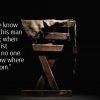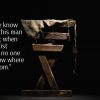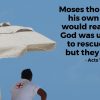My introductory class in seminary ended with me making a lifelong pledge.
Our professor had told a story about sitting on a plane next to a young woman years before. He had engaged her in conversation with the intent to share the gospel, only to find out that she already professed to be a Christian. However, she sheepishly confided that she didn’t know how to study her Bible. He proceeded to walk her through the basics of Bible study and watched as her eyes filled with tears of joy.
The professor then asked what church this woman attended. Shock seized him when she named a church pastored by one of his former students. Upon the plane’s landing, he rushed to the nearest pay phone (this was before the cellphone era) and called his former student to rebuke him for not training his congregants in how to study the Bible. I distinctly remember his finger pointed at our class and hearing him say, “Don’t let me ever bump into one of your congregants and find out that they don’t know how to study the Bible!” Inspired—but also a little afraid—I left the classroom vowing never to receive such a phone call.
I believe there is nothing more important for the Christian life than reading the Scriptures. As a pastor, I’m constantly on the lookout for helpful resources to aid believers in their Bible reading and study. Many books on the topic lack thoroughness and could be summarized adequately in a pamphlet. Others tend to lean in the opposite direction and overcomplicate the study of Scripture, making it cumbersome and intimidating. Books that equip without overwhelming are not easy to find.
Jonathan Pennington, professor of New Testament interpretation at Southern Baptist Theological Seminary, meets this high standard in Come and See: The Journey of Knowing God Through Scripture. Concise, creative, and refreshingly multifaceted, his book is exactly the kind of introductory resource I want to put into congregants’ hands.
Come and See encourages Christians to study their Bibles through three modes of reading, which Pennington labels as “informational,” “theological,” and “transformational.” He creatively pictures Bible study as a road trip with three distinct drivers. Each driver articulates how to study the Bible through each respective mode. The first, Ingrid, provides the framework for understanding what Scripture is saying on a basic level. The second, Tom, describes how we can read it to discover core truths about God and his work of redemption. And the third, Taylor, emphasizes how studying God’s Word changes the orientation of our hearts and the way we live.
As Pennington rightly stresses throughout the book, combining these three modes of reading “provides a robust and meaningful path for knowing God through the study of the Bible.” Too often, Bible study never moves past the basic facts, gets stuck in discussing the finer points of theology, or races ahead to application without getting a grasp of the passage itself. Pennington’s multifaceted approach ensures that the reader of Scripture studies to know, to believe, and to live what the Scriptures teach.
The book devotes one chapter apiece to each of these modes of reading. Each chapter contains three main points that cover the basics of reading informationally, theologically, and transformationally, along with two “side trips.” In these main sections, Pennington tackles such important topics as biblical genres, historical context, common exegetical mistakes, Scripture’s relationship to the church’s historic creeds, and the essential role of the Holy Spirit in illuminating what we read.
Each main-point treatment ends with a “Take a Turn at the Wheel” application. These brief sections are carefully thought through, and they provide helpful personal studies and questions. They would provide wonderful exercises for a small group reading this introductory book together. In fact, these exercises are so well done that I find myself wishing Pennington had provided more of them for the reader.
It is commendable how much Pennington packs into this quick read. He manages to tease out important distinctions between biblical and systematic theology while introducing readers to such weighty concepts as the “analogy of Scripture,” “reception history,” the “rule of faith,” and more.
Though I’m thankful Pennington doesn’t remain at a surface level, there are times when some of the discussions and concepts seem unnecessary for an introductory book on Biblical study. This is a small criticism, and Pennington, to his credit, takes care to explain even the trickiest ideas with clarity. Yet, I’m not sure the ordinary churchgoer looking for Bible study techniques needs a primer, say, on the Bible’s “bounded pluriformity” or the monastic practice of lectio divina. Likewise, some of the “side trips” could feel more like unnecessary diversions for average readers.
The Christian life is lived upon the foundation of the Word and in the light of the Word. We want to be people who know it, meditate upon it, live it out, and worship the God it reveals. My seminary professor was rightly upset to hear that one of his former students had not trained a congregant to study the Scriptures. We all need this equipping because we all need the Scriptures.
Come and See will prove helpful to any Christian looking to grow as a reader and studier of the Bible, or to any pastor or leader charged with facilitating that growth. My professor would have rejoiced at Pennington’s thorough and creative way of teaching others to enjoy and feast upon the treasure that is the Word of God.
Jason Helopolous is senior pastor of University Reformed Church in East Lansing, Michigan. He is the author of The Promise: The Amazing Story of Our Long-Awaited Savior and A Neglected Grace: Family Worship in the Christian Home.
Have something to add about this? See something we missed? Share your feedback here.
















Post comments (0)